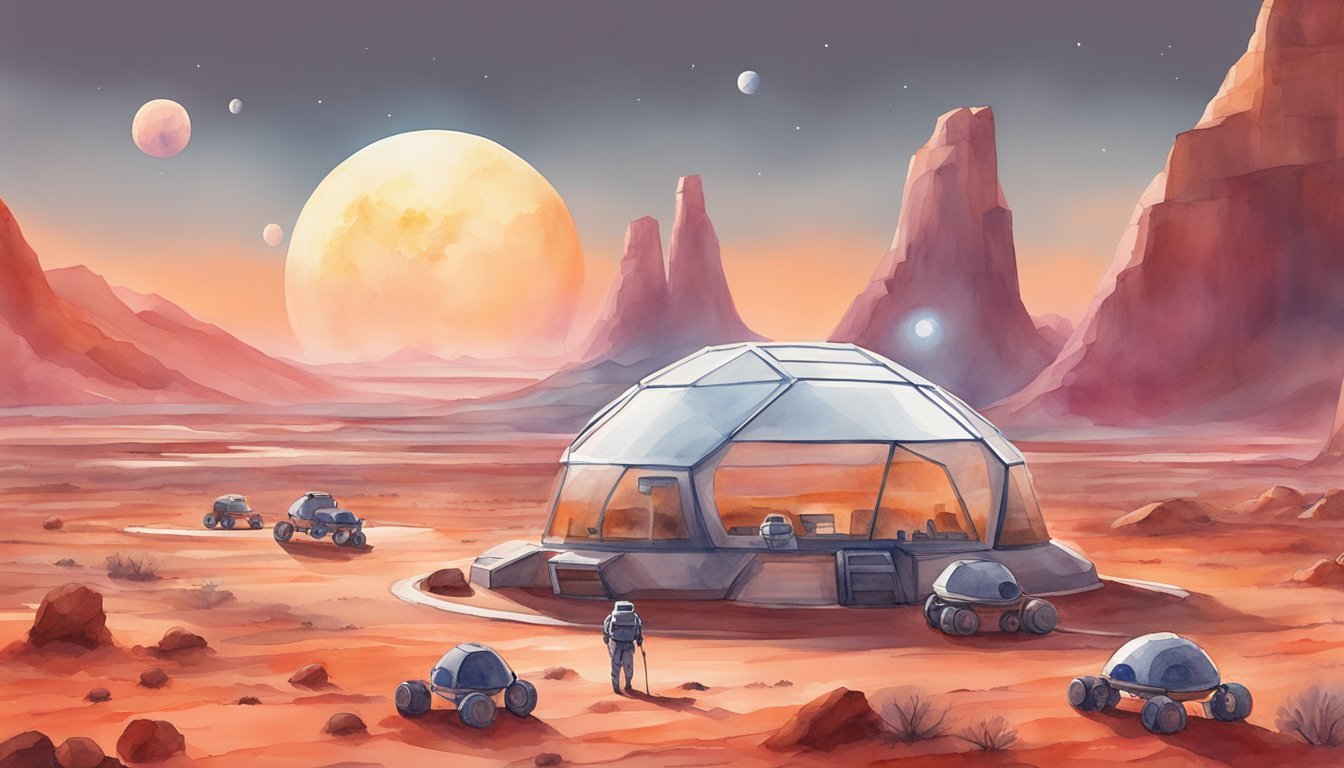Preparations for Mars Colonization
The journey to establish a human presence on Mars involves meticulous planning, cutting-edge technology, and unprecedented partnerships between governmental and private entities. This section explores the critical areas that are shaping humankind’s approach to Mars colonization.
Space Agencies and Private Partnerships
Collaborative efforts between organizations such as NASA, SpaceX, ISRO, CNSA, Roscosmos, and the Mars Society play a pivotal role in the path to settle Mars. NASA’s extensive research and planned missions provide a backbone for travel to the Red Planet. Elon Musk’s SpaceX, with its innovative vision for Mars colonization, has pushed the envelope with technologies like the Starship, envisioned to carry cargo and eventually humans to Mars.
Rocket and Spacecraft Technology
The foundation of Mars colonization lies in sophisticated rocket and spacecraft technologies. Reusability has become a cornerstone, best exemplified by SpaceX’s reusable rockets, potentially reducing the cost of space travel. NASA’s Mars Odyssey spacecraft, among others, serves as a testament to the durability and reliability needed for prolonged missions. The development of these technologies is geared towards carrying larger payloads and ensuring safe transit in the harsh environment of space.
Mars Habitability Research
Understanding the Martian environment is crucial in preparing for colonization. Research is focused on in-situ resource utilization (ISRU), which involves harnessing Mars’ natural resources for life support systems and, potentially, terraforming efforts. Probes such as the Mars Odyssey have been gathering data on Mars’ surface conditions, radiation exposure, and atmosphere, informing the design of habitats and technologies for human settlement.
Health and Safety Considerations
The well-being of astronauts is paramount, with challenges like microgravity, radiation exposure, and communication delays requiring innovative solutions. Research into long-term effects of microgravity informs the design of spacecraft interiors to mitigate health risks. Radiation protection strategies are essential due to the high levels of cosmic radiation astronauts would face during the journey and on the Martian surface. Additionally, long communication delays with Earth necessitate autonomous systems for the safety and psychological well-being of Mars inhabitants.
The multi-faceted preparations for Mars colonization involve global partnerships, advancements in space travel technology, comprehensive research on Mars’ suitability for human life, and rigorous health and safety protocols to ensure the success of one of humanity’s most ambitious endeavors.
Learn more about NASA’s Mars exploration programs
Exploring the feasibility of human settlement on Mars
Insights into the plans for establishing a Mars colony
Establishing a Human Presence on Mars

The venture of establishing a human presence on Mars encompasses building robust infrastructure, utilizing Martian resources, and considering the social and economic dynamics of a new society. This complex undertaking aims for long-term human survival and the expansion of humanity onto the Red Planet.
Surface Operations and Infrastructure
Mars colonization requires the construction of sustainable habitats and supporting infrastructure. Success hinges on the ability to deploy advanced rovers and robots that can construct the initial Martian outposts. These settlements must shield humans from Mars’ extreme temperatures and radiation, while maximizing efficiency. The development of infrastructure also includes the use of nuclear power to sustain energy needs, vital for survival in the deep space environment of Mars where solar power may be limited by dust storms.
Terraforming and In-Situ Resource Utilization
For a long-term presence on the Red Planet, transforming the Martian environment to support human life is crucial. This includes initiatives like terraforming to alter the atmosphere and surface conditions. Meanwhile, In-Situ Resource Utilization (ISRU) is essential, focusing on converting Martian soil and atmosphere into water, oxygen, and propellant for return trips to Earth or further exploratory missions.
Socio-Economic and Cultural Considerations
The establishment of a human settlement on Mars must take into account socio-economic factors and cultural integration. Considering the collaboration between various international space agencies, such as ESA and the United Arab Emirates, economic partnerships and cultural exchanges are anticipated to enrich the fabric of Martian society. This will also address human aspects of space exploration, ensuring physiological adaptation and well-being in reduced gravity conditions.
Long-Term Sustainability and Expansion
Sustainability is key in the context of Mars colonization. A long-term human mission on another planet goes beyond initial habitation; it includes the establishment of a self-sufficient and expanding Martian settlement. Continuous advancements in technology and ongoing resupply or recycling systems will be central to this effort. The efficient use of Martian resources, cooperation, and careful planning are vital for the endurance and prosperity of human settlements in this challenging new world.

